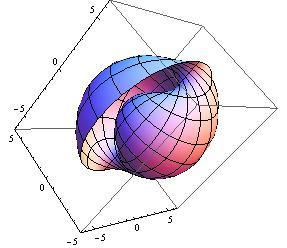So, generalizing the "spiral" sense in which this could be defined (as in, the radial almost-spirals that radiate outwards from a region around the center, such as the sequence 3,11,19,40,61,82,103,124) could we define a 3d analog of this as sea-shell shaped almost-concentric shells spiraling out from a region?
In other words, is there a packing consisting of of sea-shells, that satisfies whatever properties we'd like in terms of distributions of integers put on each "leaf" of the sea-shells?
If what we were considering initially was an actual spiral, e.g., $r(\theta)=\theta$, I would say something like the map in spherical coordinates $r(\theta,\phi) = \phi$
alt text http://img541.imageshack.us/img541/7606/shell.jpg
which is a 2-dimensional "leaf" generalizing the spiral from before, which one could presumably tile similarly to the original spiral? Or tile subject to packing conditions?
So, could we look at a definition in terms of packing, and define a similar spiral in terms of "leafs" of shells that are "almost" like $r(\theta,\phi) = \phi$, given that our initial spiral was "almost" like $r(\theta) = \theta$?
This seems more in line with a good generalization of the "spiral" nature of this problem, as opposed to thinking or putting points on concentric spheres. But I don't see an obvious way to define this in a natural way that automatically makes the sea-shell shells "almost" shells in the same way as the spiral does this, nor a "natural" one that has the $r=k^{1/3}$ dependence you want. Presumably, the natural conditions would be more obvious if the "good" properties of the spiral you want to keep are more clearly stated? It seems 3d is not constrained enough by the definition in terms of only radii and angles to come up with a unique "obviously correct" solution.
